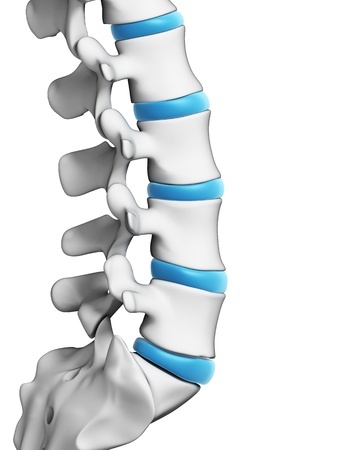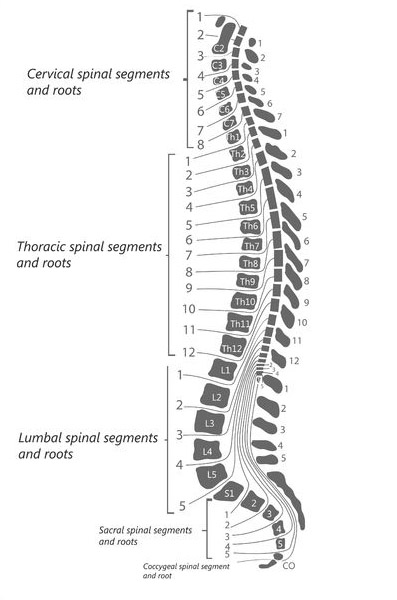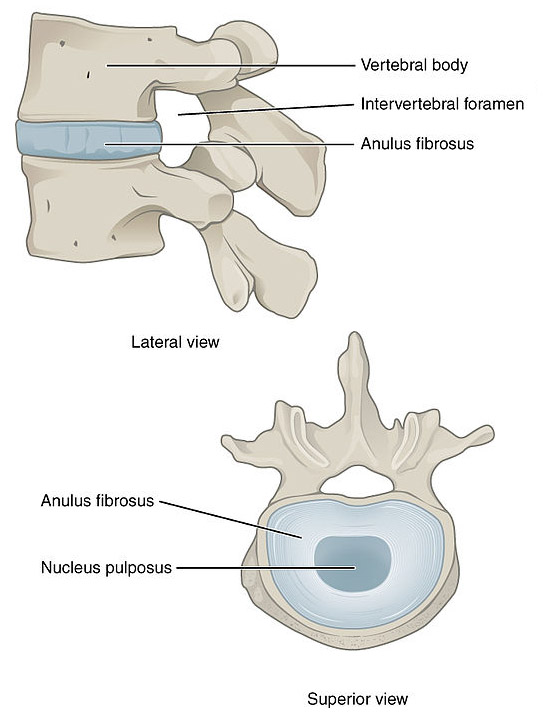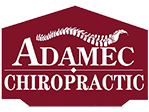Information on the Spine
Schenectady | Rotterdam | Guilderland
Information on the Spine
Schenectady | Rotterdam | Guilderland
Understanding The Spine
 The spine – also known as the vertebral column or spinal column – is comprised of 26 bones: 24 separate vertebrae interspaced with cartilage (commonly known as discs), the sacrum (a large, triangular bone at the base of the spine) and the coccyx (more commonly known as the tailbone).
The spine – also known as the vertebral column or spinal column – is comprised of 26 bones: 24 separate vertebrae interspaced with cartilage (commonly known as discs), the sacrum (a large, triangular bone at the base of the spine) and the coccyx (more commonly known as the tailbone).
The vertebrae are named by the first letter of their region (Cervical, Thoracic, and Lumbar) combined with a number to indicate their position along the superior-inferior axis. In descending order, there are 7 cervical vertebrae (C1 – C7), 12 thoracic vertebrae (T1 – T12), and 5 lumbar vertebrae (L1 – L5). For example, T1 is the top most vertebrae in the thoracic region and located directly beneath C7.
5 Spinal Regions
 Cervical: The 7 vertebrae in the neck form the cervical region of the spine. Although the cervical vertebrae are the thinnest and most delicate vertebrae in the spine, they offer great flexibility to the neck. The first two cervical vertebra, C1 and C2, are named named the Atlas and the Axis respectively and form the joints connecting the skull and spine. The skull pivots on the Atlas when moving up and down, and rotates on the Axis moving right and left.
Cervical: The 7 vertebrae in the neck form the cervical region of the spine. Although the cervical vertebrae are the thinnest and most delicate vertebrae in the spine, they offer great flexibility to the neck. The first two cervical vertebra, C1 and C2, are named named the Atlas and the Axis respectively and form the joints connecting the skull and spine. The skull pivots on the Atlas when moving up and down, and rotates on the Axis moving right and left.
Thoracic: The 12 vertebrae in the chest region form the spine’s thoracic region. Thoracic vertebrae are larger and stronger than cervical vertebrae but are much less flexible. A unique feature of the thoracic vertebrae is that each one forms joints with a pair of ribs to form the sturdy rib cage that protects the organs of the chest.
Lumbar: The 5 vertebrae in the lower back form the lumbar region of the spine. Lumbar vertebrae larger and stronger than thoracic vertebrae; however, because of the lack of ribs in this region, the lumbar vertebrae are more. Despite the size and strength of the lumbar vertebrae, this region is most associated with back problems due to the fact that all of the upper body’s weight bears down on the lumbar region.
Sacral: The sacral region of the spine contains only the sacrum, a single bone in the adult skeleton that is formed by the fusion of 5 smaller vertebrae during adolescence. The sacrum is a flat, triangular bone found in the lower back and wedged between the 2 hip bones.
Coccyx: The coccyx is a single bone in the adult skeleton that is formed by the fusion of 4 tiny vertebrae during adolescence. In humans, the coccyx bears our body weight when sitting down and provides attachment points for muscles of the pelvic and gluteal regions.
Intervertebral Discs
 Discs consist of an outer fibrous ring, the anulus fibrosus, which surrounds an inner gel-like centre, the nucleus pulposus. The anulus fibrosus consists of several layers of fibrocartilage. The strong annular fibers contain and protect the nucleus pulposus, distributing pressure evenly across the disc. The nucleus pulposus contains loose fibers suspended in a mucoprotein gel and act as a shock absorber, absorbing the impact of the body’s activities and keeping the two vertebrae separated.
Discs consist of an outer fibrous ring, the anulus fibrosus, which surrounds an inner gel-like centre, the nucleus pulposus. The anulus fibrosus consists of several layers of fibrocartilage. The strong annular fibers contain and protect the nucleus pulposus, distributing pressure evenly across the disc. The nucleus pulposus contains loose fibers suspended in a mucoprotein gel and act as a shock absorber, absorbing the impact of the body’s activities and keeping the two vertebrae separated.
Real Reviews from Real People!




















































